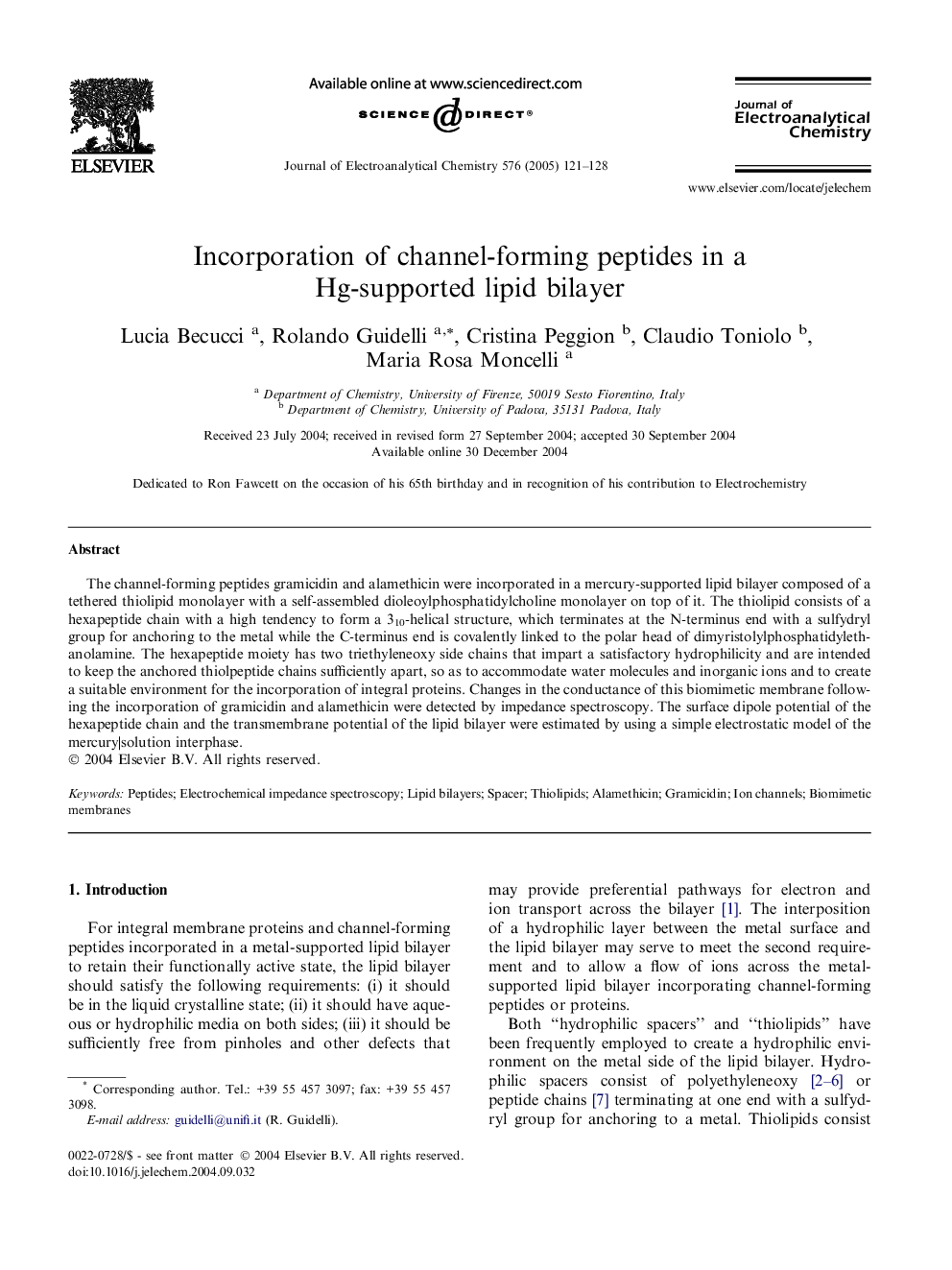| Article ID | Journal | Published Year | Pages | File Type |
|---|---|---|---|---|
| 10275949 | Journal of Electroanalytical Chemistry | 2005 | 8 Pages |
Abstract
The channel-forming peptides gramicidin and alamethicin were incorporated in a mercury-supported lipid bilayer composed of a tethered thiolipid monolayer with a self-assembled dioleoylphosphatidylcholine monolayer on top of it. The thiolipid consists of a hexapeptide chain with a high tendency to form a 310-helical structure, which terminates at the N-terminus end with a sulfydryl group for anchoring to the metal while the C-terminus end is covalently linked to the polar head of dimyristolylphosphatidylethanolamine. The hexapeptide moiety has two triethyleneoxy side chains that impart a satisfactory hydrophilicity and are intended to keep the anchored thiolpeptide chains sufficiently apart, so as to accommodate water molecules and inorganic ions and to create a suitable environment for the incorporation of integral proteins. Changes in the conductance of this biomimetic membrane following the incorporation of gramicidin and alamethicin were detected by impedance spectroscopy. The surface dipole potential of the hexapeptide chain and the transmembrane potential of the lipid bilayer were estimated by using a simple electrostatic model of the mercury|solution interphase.
Keywords
Related Topics
Physical Sciences and Engineering
Chemical Engineering
Chemical Engineering (General)
Authors
Lucia Becucci, Rolando Guidelli, Cristina Peggion, Claudio Toniolo, Maria Rosa Moncelli,
